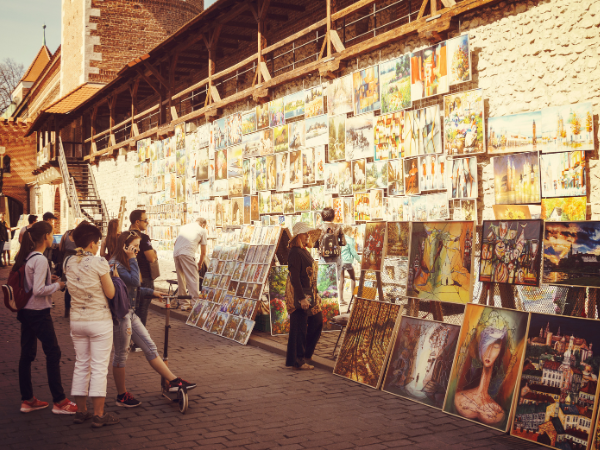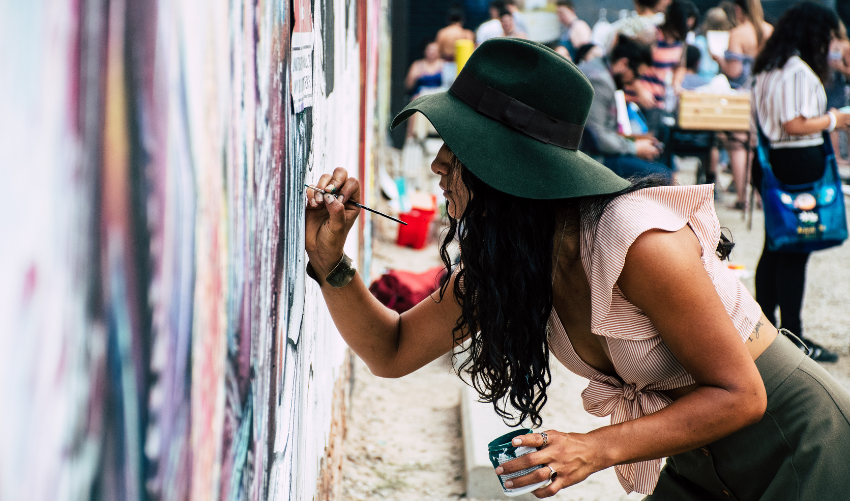Art has always been more than decoration; it is a mirror of society, a record of human imagination, and a force that shapes cultural identity. From prehistoric cave paintings to modern masterpieces, certain works have transcended their time to become cultural landmarks. These paintings not only influenced artistic movements but also reflected political upheavals, religious transformations, and philosophical shifts.
Prehistoric Beginnings: Cave Paintings of Lascaux
The story of painting begins deep underground, where prehistoric humans recorded their lives on cave walls. The Lascaux Cave Paintings in France, dating back over 17,000 years, are among the most famous examples of early art. They depict animals, hunting scenes, and abstract symbols, offering insight into the spiritual and social lives of early humans.
Key highlights of Lascaux paintings:
- Depictions of bulls, horses, and deer.
- Use of natural pigments like ochre and charcoal.
- Symbolic patterns suggesting ritual or storytelling.
- Evidence of early human creativity and communication.
These works shaped culture by establishing art as a tool for storytelling and ritual. They remind us that creativity has always been central to human survival and identity.
Sacred Imagery: Byzantine Icons and Medieval Art
During the Middle Ages, art was inseparable from religion. Byzantine icons and illuminated manuscripts were not merely decorative—they were central to worship and education. These paintings reinforced cultural values, transmitted biblical narratives, and unified communities under shared symbols.
Defining traits of medieval sacred art:
- Gold backgrounds symbolizing divine light.
- Stylized figures emphasizing spirituality over realism.
- Illuminated manuscripts preserving religious texts.
- Iconography used for teaching and devotion.
By shaping spiritual life and reinforcing moral codes, medieval art became a cultural cornerstone, linking faith with daily existence.
Renaissance Humanism: Leonardo da Vinci and Michelangelo
The Renaissance marked a rebirth of classical ideals and humanist philosophy. Artists like Leonardo da Vinci and Michelangelo revolutionized painting by emphasizing anatomy, perspective, and intellectual curiosity.
Key Renaissance masterpieces:
- Mona Lisa by Leonardo da Vinci — enigmatic portrait redefining realism.
- The Last Supper by Leonardo — dramatic narrative of faith and betrayal.
- Sistine Chapel ceiling by Michelangelo — monumental fresco celebrating divine creation.
- Raphael’s School of Athens — tribute to philosophy and classical learning.
These works shaped culture by celebrating human potential, bridging science and art, and redefining beauty as a reflection of both divine and earthly perfection.
Baroque Drama: Caravaggio and Rembrandt
Baroque art introduced theatricality, emotion, and realism. Painters like Caravaggio and Rembrandt captured human vulnerability and divine intervention with dramatic contrasts of light and shadow.
Baroque innovations:
- Caravaggio’s The Calling of Saint Matthew — intense chiaroscuro.
- Rembrandt’s portraits — psychological depth and realism.
- Dynamic compositions emphasizing movement.
- Religious and secular themes presented with emotional intensity.
By making art more accessible and emotionally charged, Baroque painters reflected the turbulence of 17th‑century Europe and reshaped cultural storytelling.
Revolutionary Brushstrokes: Romanticism and National Identity
In the 18th and 19th centuries, Romantic painters used art to express political ideals and national identity. Their works became symbols of revolution and resistance.
Romantic masterpieces:
- Delacroix’s Liberty Leading the People — allegory of revolution.
- Goya’s The Third of May 1808 — raw depiction of war’s brutality.
- Turner’s landscapes — sublime power of nature.
- Caspar David Friedrich’s Wanderer Above the Sea of Fog — reflection on individuality.
Romanticism shaped culture by linking art to social justice, patriotism, and collective memory, inspiring movements far beyond the canvas.
Modernist Breakthroughs: Impressionism and Cubism
The late 19th and early 20th centuries saw radical experimentation. Impressionists and Cubists challenged traditional representation, reshaping culture by encouraging innovation and questioning perception.
Modernist highlights:
- Monet’s Impression, Sunrise — birth of Impressionism.
- Van Gogh’s Starry Night — emotional intensity through color.
- Picasso’s Les Demoiselles d’Avignon — pioneering Cubism.
- Matisse’s bold use of color — redefining harmony.
These movements influenced not only art but also design, literature, and philosophy, proving that creativity could transform how people see the world.
Expression and Identity: 20th‑Century Icons
The 20th century brought art closer to personal and political identity. Painters explored individuality, cultural heritage, and psychological complexity.
20th‑century icons:
- Frida Kahlo’s self‑portraits — exploration of pain and identity.
- Jackson Pollock’s abstract expressionism — freedom and chaos.
- Mark Rothko’s color fields — meditations on emotion.
- Andy Warhol’s pop art — commentary on consumer culture.
These works shaped culture by amplifying marginalized voices, redefining individuality, and reflecting the complexities of modern life.
Contemporary Resonance: Global Voices in Art
Today, contemporary painters from diverse backgrounds continue to shape culture. Their works challenge traditional narratives, celebrate diversity, and engage with global issues.
Contemporary highlights:
- Yayoi Kusama’s polka‑dot infinity rooms — exploration of self and cosmos.
- Kehinde Wiley’s portraits — reimagining classical art with Black subjects.
- Ai Weiwei’s politically charged works — critique of authority.
- Julie Mehretu’s abstract maps — reflections on migration and globalization.
Contemporary painting proves that art remains a living dialogue, constantly reshaping cultural identity in a globalized world.
Conclusion
From the caves of Lascaux to the studios of contemporary artists, famous paintings have always been more than visual artifacts—they are cultural milestones. Each era’s masterpieces reflect the values, struggles, and aspirations of humanity, shaping not only the art world but also politics, religion, and social life. By studying these timeless strokes, we gain insight into how culture evolves and how art continues to inspire, challenge, and unite us across centuries.




